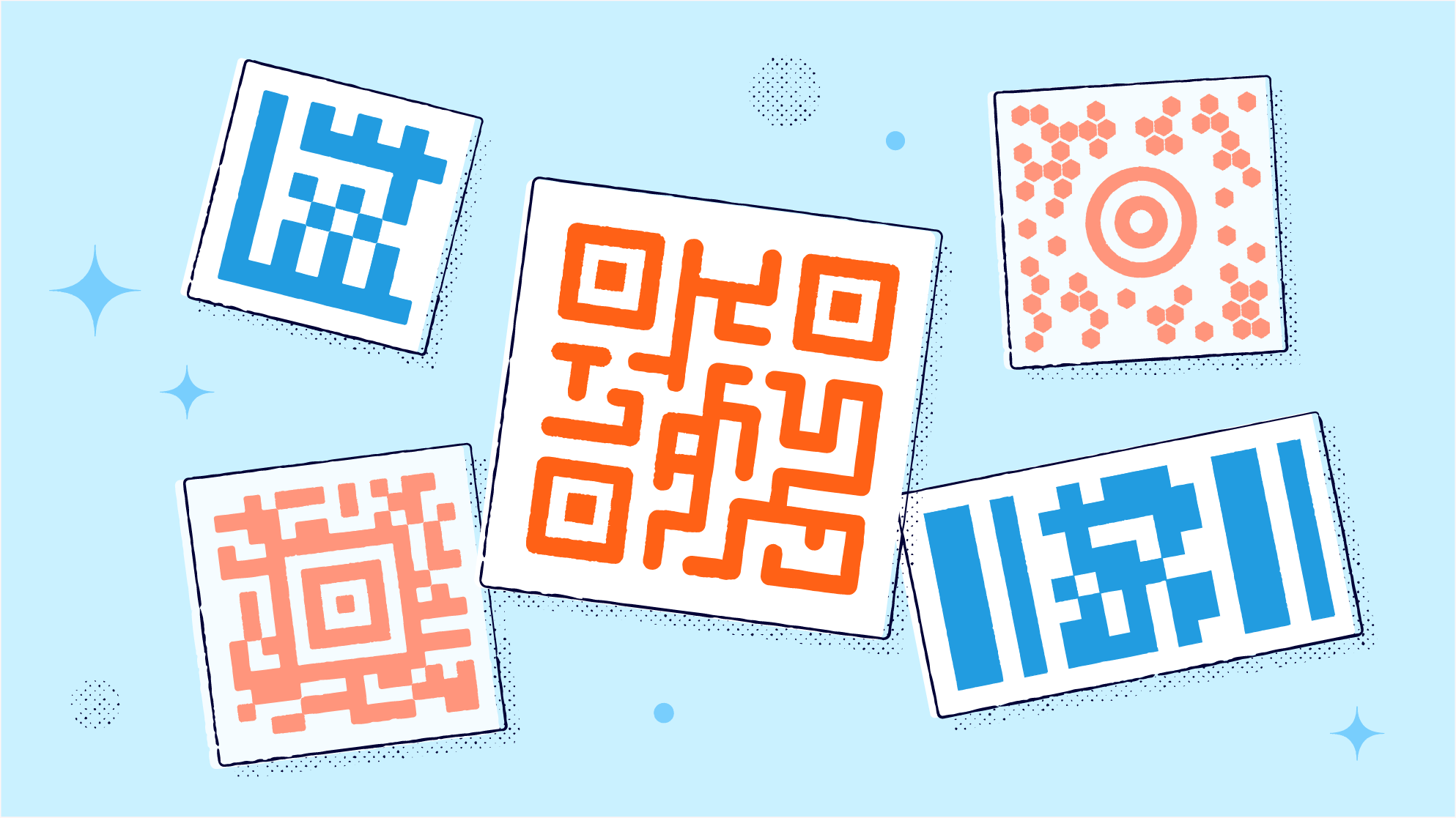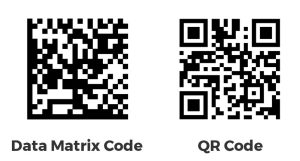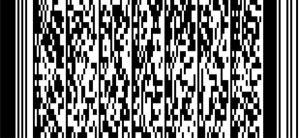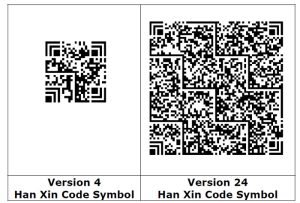If you haven’t already heard, by 2027, all traditional barcodes will be replaced by the square-shaped codes you’ve probably seen on restaurant menus and ads everywhere. With the deadline to transition looming ever-closer, that means that this is a great time to learn more about the new codes—known as 2D barcodes—and how they can help business owners achieve greater efficiency, transparency, and consumer trust. In today’s post, we’ll discuss the most popular types of 2D barcodes, so you can determine which will provide the most value for your business.
1D and 2D barcodes: What’s the difference?
So, what are 1D and 2D barcodes, exactly? 1D barcodes display information on a single, horizontal axis, forming a “bar” consisting of alternating black bars and white spaces. Though relatively simple, 1D barcodes helped revolutionize retail and supply chain efficiency, ever since they were first introduced in 1974.
2D barcodes, on the other hand, are square-shaped, encoding data on both the horizontal and vertical axes. This means that they can represent much more data than a 1D code can. Because of this, 2D codes open up the door to many more marketing opportunities. For instance, a consumer could scan a 2D code to view a how-to video for a certain product, or find out where the product was sourced from. 2D barcodes are also very durable, and are designed to keep data intact even if they are ripped, scratched, or damaged. This makes them well-suited to fast-paced, industrial environments like warehouses.
Below are the most common types of 2D barcodes and their unique advantages.
QR Code (Quick Response Code)
QR codes are the most popular type of 2D code, for several reasons. Firstly, they are very flexible, and can be scanned quickly across a broad range of sizes. They support four different modes of data: numeric, alphanumeric, byte/binary, and even Kanji. Best of all, from a business perspective, they are public domain and free to use. Because of all these features, they are often used in advertising, retail, and entertainment.
- Common uses: Marketing; payment processing; digital menus; education.
- Capacity: Up to 7,089 numeric characters or 4,296 alphanumeric characters.
Data Matrix codes
Data matrix codes offer high data density and a tiny footprint, making them ideal for marking small products and documents. In fact, the U.S. Electronic Industries Alliance (EIA) recommends that they be used to label small electronic components. Like QR codes, they have high fault tolerance and fast readability, and can be read even in low resolutions, or with nonoptimal scanning positions.
- Common uses: Marking small items like microchips, electronics, and pharmaceuticals.
- Capacity: Up to 3116 numeric characters or 2335 alphanumeric characters.
PDF417 Codes
PDF417 codes, on the other hand, are used for applications that require the storage of huge amounts of data, like photos, fingerprints, and signatures. They can hold over 1.1 kilobytes of data, making them much more powerful than other 2D barcodes. Thanks to their large capacity, PDF417 codes are most commonly used to create paper boarding passes and state-issued identification cards. They are also used in inventory management, as well.
- Common uses: Transportation, identification cards, and inventory management.
- Capacity: Up to 1,800 printable ASCII characters or 2,710 numeric digits.
Aztec Code
Aztec codes are another type of 2D barcode that is frequently used in the transportation industry, particularly for tickets and boarding passes. Like other 2D codes, they can still be decoded even if they have bad resolution, making them useful when tickets are printed poorly or presented on a phone. Aztec barcodes are extremely space-efficient, capable of holding massive amounts of data while maintaining a relatively small size. And while they don’t support the same range of characters as QR codes do, they remain a powerful tool for transportation, healthcare and other industries.
- Common Uses: Tickets (boarding passes, train tickets), and payment systems.
- Capacity: Up to 3,832 numeric characters or 3,067 alphanumeric characters.
MaxiCode
MaxiCodes are also referred to as “Bird’s Eye” or “Target” codes due to the unique circle that sits at their center. It was first developed by United Parcel Service (UPS) in 1992 to help track and manage packages. The MaxiCode is now used extensively throughout the logistics and shipping industries. Each code can store up to 93 characters of information, including postal codes, country codes, and service codes. The round “bullseye” in the middle allows MaxiCodes to be scanned and read regardless of orientation, even if the package is moving quickly. Up to eight MaxiCodes can be chained together to convey more data.
- Common Uses: Used primarily by UPS for tracking and managing shipments.
- Capacity: Can encode up to 93 characters of text.
Han Xin Code
The Han Xin Code is also referred to as the Chinese Sensible Code. It is a 2D barcode which is able to encode Chinese characters, as well as numeric digits and other types of data. The Chinese company Han Xin Code Co. designed it and introduced to market in 2007. The Han Xin code can encode up to 2,174 Simplified Chinese characters, depending on the version of the code that is used.
- Common Uses: Primarily in Chinese industries for encoding Chinese characters.
- Capacity: Variable based on the version that is used.
How do I transition my company to 2D barcodes?
As we mentioned in the introduction, traditional 1D barcodes are on track to be phased out by 2027. The good news is that GS1, the organization which regulates product packaging codes, has created a handy resource which business owners can use to help facilitate the transition. By taking the Barcode Capabilities Test Kit, you can assess your system and identify gaps that need improvement. Your business will then be able to adopt, test, and refine a solution until it’s ready to be used by consumers.
Need more help with marking, coding, or packaging?
Call SSI Packaging! Our family-owned, Richmond-based business has been supplying organizations with everything they need for over 50 years. Whether you need assistance with food packaging, eCommerce fulfillment, or something else, we’re ready to help you find the right product or solution. To learn more, contact us here.







